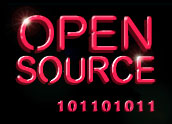
Simplify.
That, at its heart, is the purpose of XBRL — extensible business reporting language. XBRL employs a common set of tags for financial terms, making reports more searchable and transparent to everyone who uses them.
Data Facilitator
“XBRL is a technical standard for how information for business reporting is initially created, processed, distributed and ultimately used,” Michelle Savage, vice president of communications for XBRL US, told LinuxInsider.
Designed to provide information to investors and anyone else researching financial markets, it is an open standard that is operating system agnostic.
XBRL (based on XML, or extensible markup language) is used for bank call reports and data transfers from one government agency to another. “It takes one piece of information and packages data around it — gives it human and computer-readable label, gives it a definition,” Savage noted.
For example, in the case of earnings per share, “the human-readable label is fully diluted EPS,” she said. “It packages that information and also tells the user what time period is covered.”
The U.S. government has gotten involved, endorsing the use of XBRL. Earlier this year, the Securities and Exchange Commission proposed rules that would mandate its adoption.
“XML-based reporting for public companies’ financial statements will make information more accurate, timely and actionable, because descriptive information is embedded in every datapoint,” Mark Bolgiano, president and chief executive officer of XBRL US, told LinuxInsider. “Ultimately, better information results in greater transparency — and that’s what XBRL is all about.”
XBRL Skeptics
Not everyone is completely on board with XBRL, however.
As currently envisioned, the system has accuracy issues, according to Jeff Mahoney, general counsel at the Council for Institutional Investors.
“We’re not opposed to the concept so much, but some of the elements of the proposal raised concerns with us,” Mahoney told LinuxInsider. “We’re all for facilitating the distribution of financial information to investors in other markets and using electronic means to do so. We’re certainly supportive of technology to help investors sort financial information.”
Two aspects of the XBRL proposal have sparked debate:
“One is the assurance that the information is being properly tagged,” Mahoney said. “There was a lot of controversy about whether auditors should give some assurance on the tagging.”
The SEC proposal, Mahoney said, does not provide any type of assurance other than liability-related provisions.
There needs to be “some effective way to ensure that the data tags are appropriately applied,” he stressed. “I think it’s fair to say that it’s not clear there’s any insurance that that will be taken care of.”
There are also concerns about auditing information conveyed using XBRL and legal protections for users of the data, said Mahoney.
“In a nutshell, if you have an error in the XBRL data, you have greater legal protection than if you have an error in the data in your traditional financial statements,” he explained. “So, then you ask why would there be a distinction between the two? The SEC’s answer is, basically, they’re giving greater protection for this XBRL data because, in my mind, they want to encourage people to use it.”
The move to XBRL is driven more by the interests of data issuers than by the concerns of investors and other users of financial information, Mahoney said.
For one thing, it lowers issuers’ costs, he pointed out. However, “if there’s less assurance of greater legal protection, there’s greater risk that this information is not going to be useful to investors — in other words, junk in, junk out.”
Investors Benefit?
Investors will benefit from the technology, insisted Savage. “It improves the clarity of [financial] information so the end user understands it. It makes it computer-readable, so large volumes of information can be consumed more readily.”
The new language also saves time, she said. “With a few keystrokes, [XBRL data] can be drawn into a software program that allows you to see that information faster — and it’s also more clear, because the definitions tell you what you’re working with.”
It may prove to be a Herculean task for some companies to institute XBRL as the standard in financial communications — but the change ultimately will be positive, according to Rob Enderle, principal analyst with the Enderle Group.
“The goal here is to make it easier for investors and financial analysts to get to critical information and make a more accurate assessment of the company,” Enderle told LinuxInsider.
“The problem is that financial organizations tend to be slow to change and generally don’t have the headroom for much training, which means accurate adoption of a tool like this tends to take a long period of time.”
XBRL’s biggest obstacle may be human nature.
“We, as a race, don’t take to change all that readily,” Enderle said. “In the end, once adopted, it should reduce the time it takes to do good financial analysis and improve the accuracy.”


















































Dan Roberts, an XBRL maven with many years of auditing experience, has written a two-part post for the Hitachi XBRL blog that addresses the XBRL and assurance issue. The first part (which contains a link for the second) is at http://hitachidatainteractive.com/2008/09/24/xbrl-will-be-audited-part-1/
Bob Schneider
Editor, Data Interactive (the Hitachi XBRL blog)
Hitachidatainteractive.com